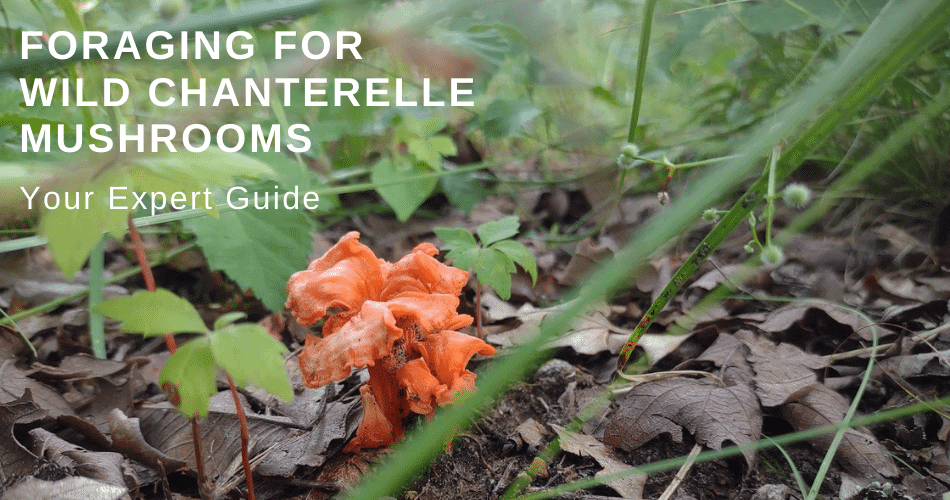Foraging for wild edibles is a popular hobby for many people all over the world. Many people around the world experience food insecurity. Foraging for wild foods helps families reduce their monthly grocery bills. It’s also fun to go out into the woods and find your food. Foraging for wild chanterelle mushrooms is a popular undertaking because they are simply delicious. They’re also readily available in most US states.
What You Need to Know About Chanterelle Mushrooms
You should know is that many imposter mushrooms, called false varieties, exist. It’s often difficult to tell one type of mushroom from a toxic look-alike. It’s highly advisable to go hunting with someone who is an expert at hunting mushrooms.
If that isn’t possible, the next best option is to join some groups that hunt mushrooms. These groups are filled with professional botanists, mycologists, and hobby mushroom hunters. They are always happy to help you properly identify mushrooms.
Get a phone app to help you determine what a mushroom might be. Don’t completely trust the app with your health. Take photos of the area where you found the mushroom before you disturb it.
When you pick the mushroom, take photos of the top, sides, underside of the cap, and stem. Now, show your group either in person or by posting your photos and have several people agree on the identification.
This is the best way to learn and stay safe. Do not, under any circumstances, put food in your mouth unless you are a thousand percent sure that it is safe.
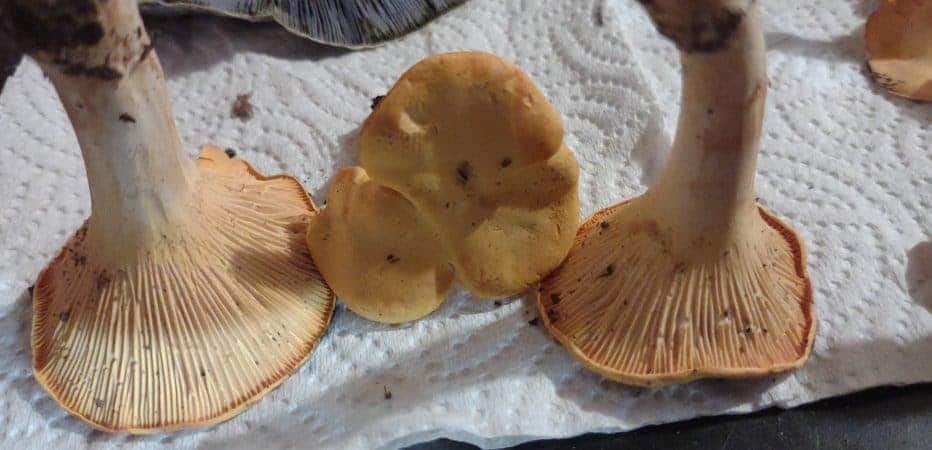
Wild Chanterelle Identification
The above photo shows the wild chanterelle (Cantharellus cibarius). Note how the mushroom takes the shape of a trumpet. There is not a separate cap. The ridges run right into the stem and are not gills.
If you touch these ridges, they’ll feel relatively firm. Gills are paper-thin and crush easily if a finger is run across them sideways. These ridges do not fork; they run in a straight line from the lip of the cap down to the stem.
The stem is pale, almost pure white. Note, the cap can be pale yellow to a bright golden color that might appear orange when very bright. They are often referred to as wild golden chanterelle mushrooms because they are brightly golden against the forest floor.
The color will be uniform across the cap. Some chanterelle mushroom imposters will be darker in the center and paler at the edge of the cap.
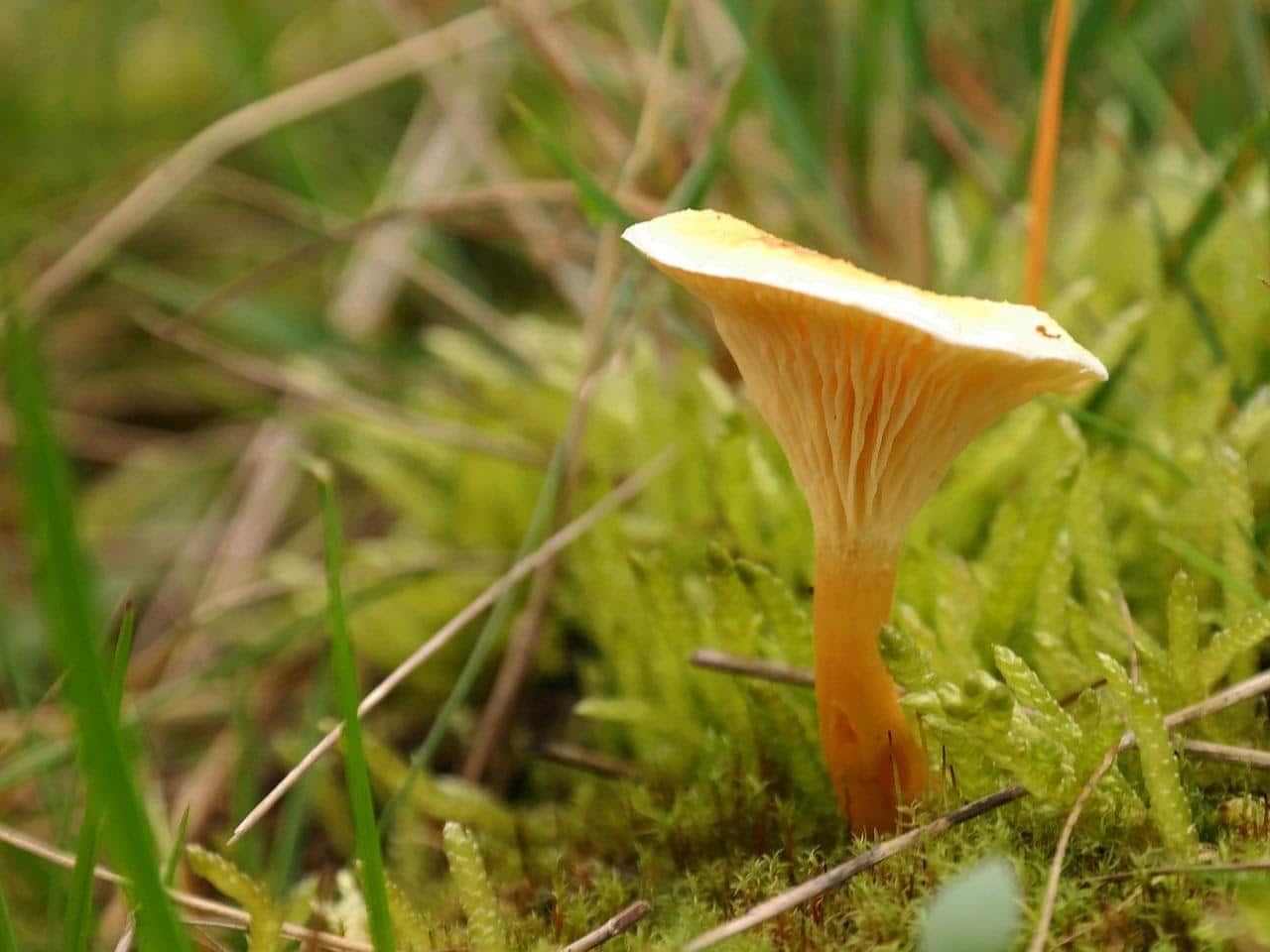
This is a false chanterelle. Note the presence of deep gills, not just shallow ridges. They’re quite fine and will crush easily. They are also forked. The stem is darker in appearance, as well as thinner in circumference.
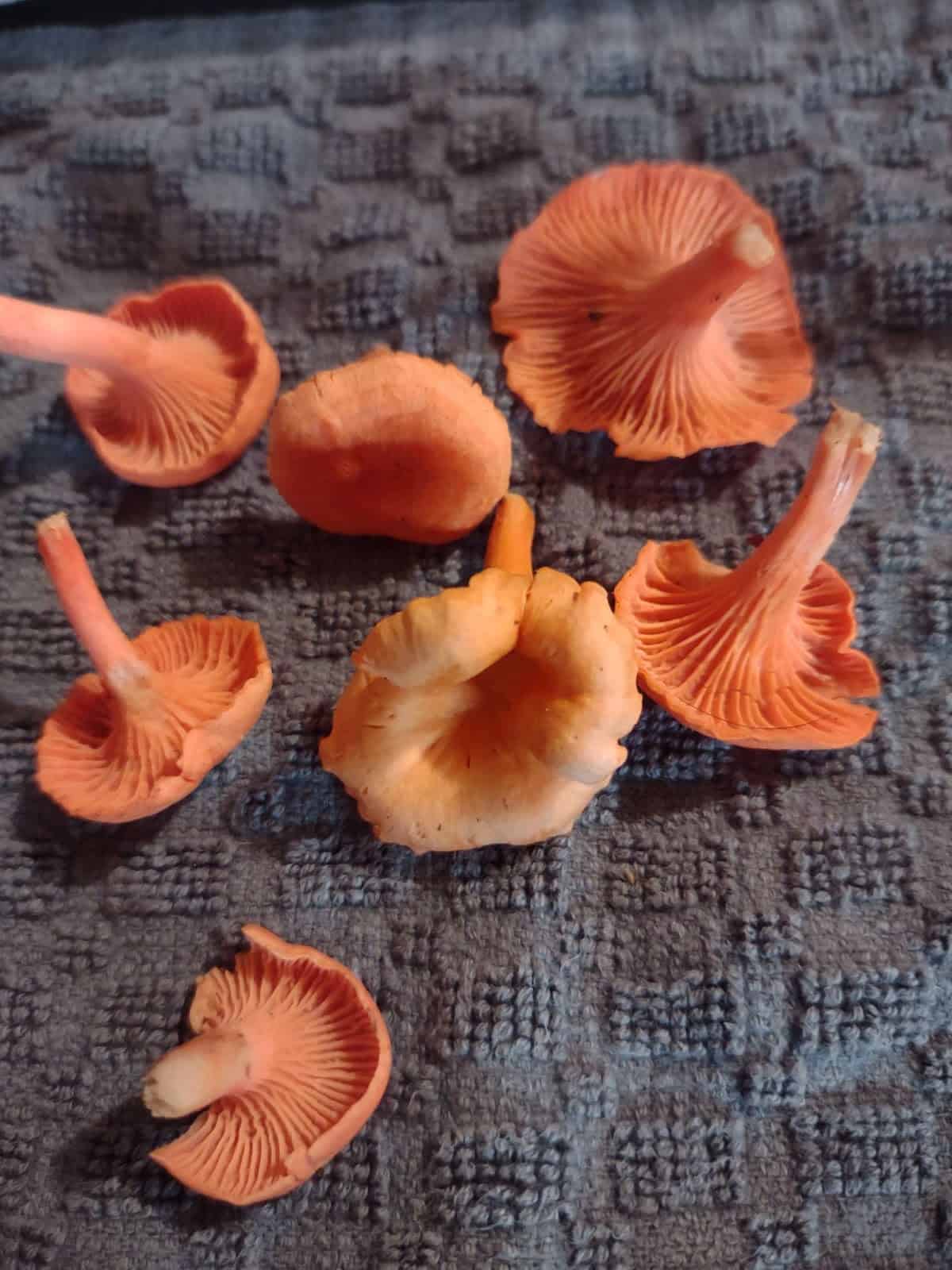
These are true chanterelles (Cantharellus cibarius). You can see the underside is almost forming a bowl as it is so shallow. The ridges are not deep like gills. They do not fork. The color of the chanterelle is more uniform, as well.
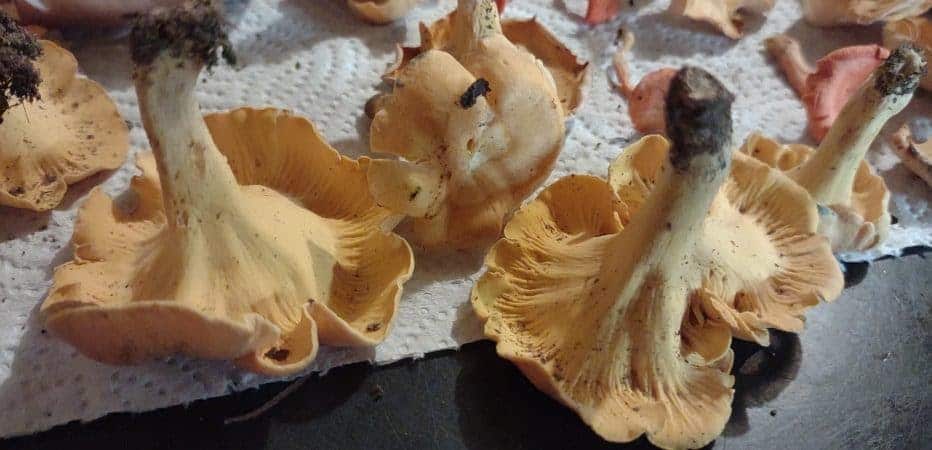
You may also find smooth chanterelles (Cantharellus lateritius). Note, they have a smooth stem with ridges barely visible under the cap. Color is uniform. If you have several in a bag, take a whiff of them. They should smell similar to apricots. If it smells earthy or musty, they probably aren’t smooth chanterelles.
When you find chanterelles in the wild, they might seem like crumpled pieces of paper or plastic. It’s usually the color that catches your eye. I recently had a friend whose eight-year-old son spotted orange in the yard from his window. He happily harvested the chanterelles for his mother. This little guy has been going wild chanterelle hunting with his mom since he was a toddler. He’ll never go hungry.
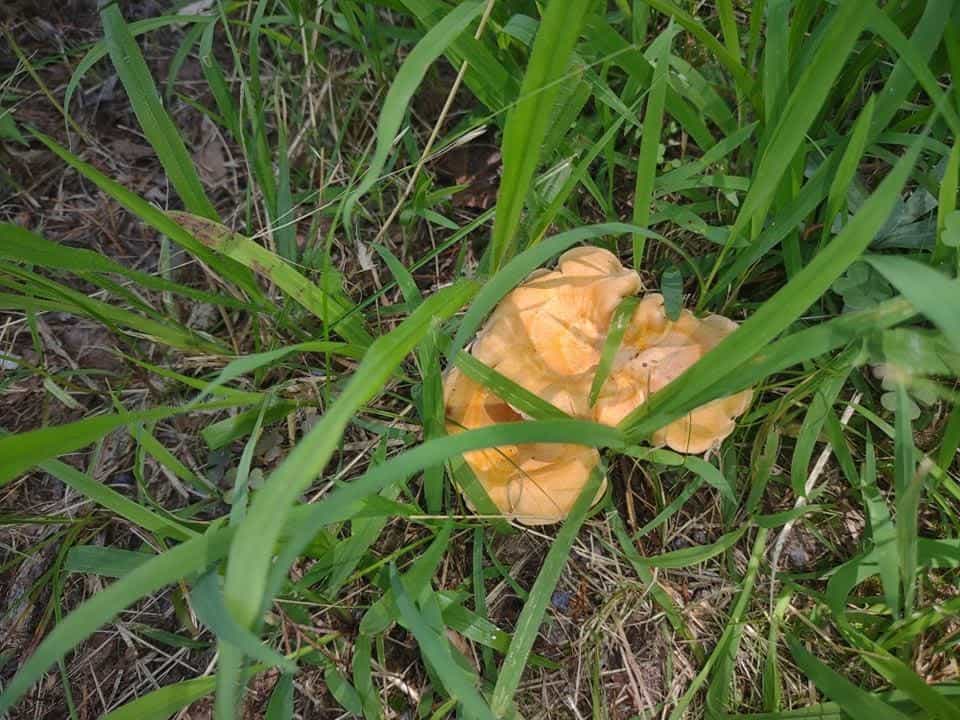
This is a wild chanterelle. This one is a pale golden color, resembling chicken of the woods, but chanterelles are not attached to wood. You’ll find them on the forest floor or right in your front yard.
Perfect Wild Chanterelle Conditions
The most often asked question from people is, “Where do I find chanterelles?” They like soil with a pH of 4 to 5.5. They prefer low nitrogen and a well-drained area. In your specific area, they may like spots near a river or body of water.
They can also make appearances in other open fields after a good rain. Chanterelles are most abundant in warm weather but not too hot. July tends to be a great month for finding them in most US states.
Bear in mind that hunting chanterelles in Oregon won’t be the same as in Alabama. Seasons may vary by a few weeks, depending on the weather.
They like moist soil but won’t appear in standing water or muddy, overly damp soil. They can be found as a single mushroom.
They don’t grow in clusters, but others might be nearby. One stem will equal one cap. In other words, they don’t grow in a cluster like oysters or chicken of the woods.
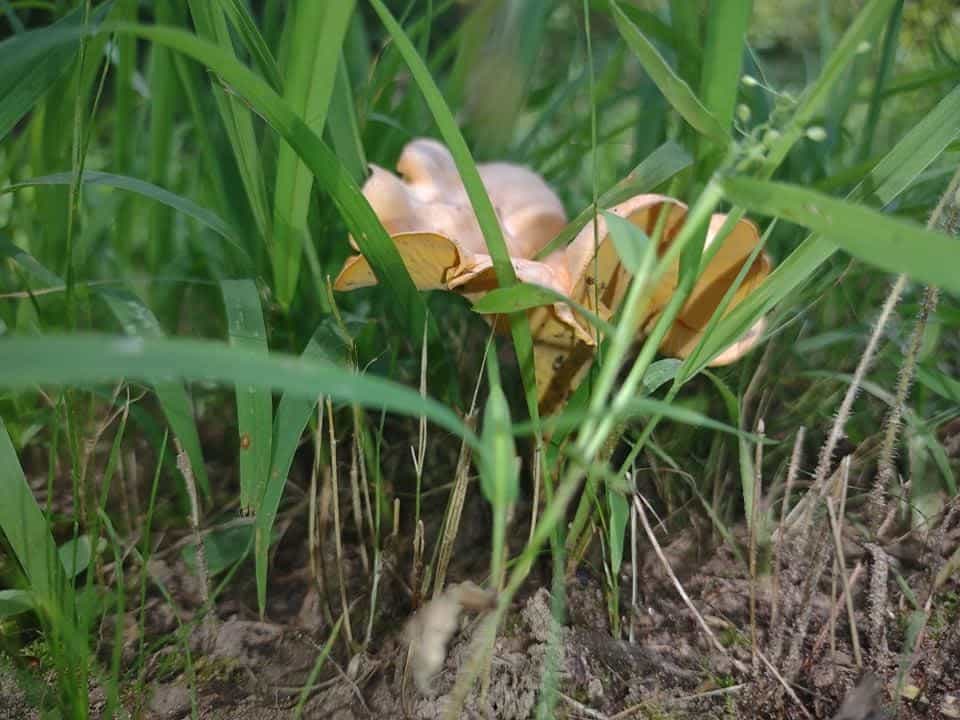
What You Need For Mushroom Hunting
Like all things, mushroom hunting requires the right tools. Luckily, it doesn’t require anything that most people don’t already have at home. You’ll want a pocketknife so you can cut your mushroom off at the ground.
Cut the stem near the ground, don’t disturb the soil. This makes it more likely that more mushrooms will grow back in that area. You can revisit these places for more in the future!
Some hunters carry a small paintbrush or soft-bristled toothbrush for dusting the dirt from their harvested mushrooms. Lastly, it is advantageous to use a woven basket or a cloth bag with a loose weave. This will allow your mushrooms to shed their spores and continue to propagate as you walk with them.
For yourself, if you live in a state with poisonous snakes, wear appropriate boots. Cover your head to prevent ticks in your hair. Tuck your pants into your socks or boots and spray yourself with tick and mosquito repellant.
Take water and protect yourself from the sun. Make sure your phone is charged and in your pocket. You can use GPS in case you get lost.
That’s it! Go hunting.
How to Prepare Chanterelle Mushrooms
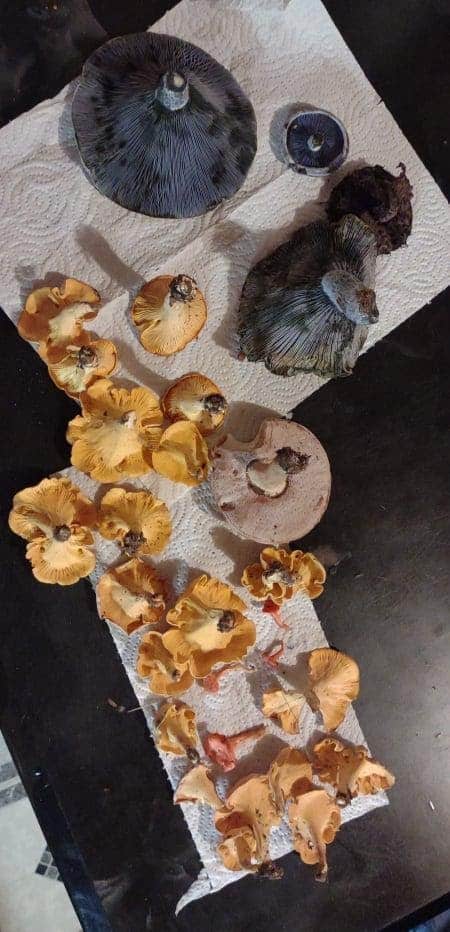
How shall these be prepared? The first thing to keep in mind is that these don’t keep very well. After 24 hours, they start getting wilted and soft.
Mushrooms can be dehydrated, cooked then canned, cooked, and eaten right away, and some varieties freeze fairly well.
Let’s worry about cooking these, shall we? For myself, I love simplicity. You can get fancy and decide to make a cream sauce with mushrooms, or you can batter them and fry them.
I love simple sauteed mushrooms. I melt butter, add some garlic, salt, pepper, and cook them until they are soft. Served with any meat, they are delicious. They’ve got a hint of fruity flavor and pair nicely with beef, or in this particular case, venison.
You should use a little caution when eating your first wild mushrooms. If they’re not toxic, you’re safe from death or severe illness, don’t worry. That said, you could potentially find that your stomach isn’t necessarily happy with them at first.
In other words, you could have cramps or diarrhea. It’s best to go slow to see how your system tolerates any new type of food—especially wild mushrooms.
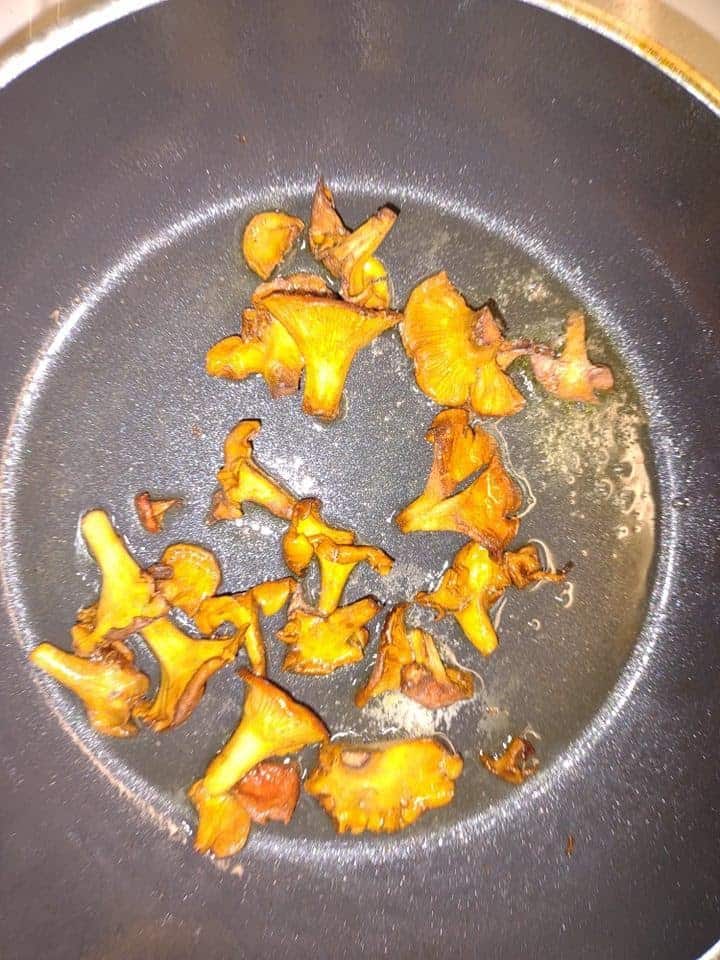
Just lightly brown them with some butter, salt, pepper and serve as a side dish with steak, venison, fish, or chicken. Add them to any vegetarian dish.
Note that they do shrink considerably. If you plan on dehydrating them, they will reduce in size by a quarter of the size they started.
Safety Reminder and Final Words
It can never be said too often to be careful. Don’t eat anything you aren’t totally sure of. Never eat a lot at your first sitting. Don’t be tempted to taste things. There are certain types of wild foods that can make you extremely sick. Some can kill you and there is no antidote.
Protect yourself with proper shoes and clothing. Shorts and flip-flops are not okay for traipsing around in the wild, especially near water. Cottonmouth and Copperhead snakes blend into their environments perfectly.
One wrong step and you’re on a med-flight. A friend of mine just had her son get nine vials of antivenom for a Copperhead bite in Oklahoma. Wear boots! Timber rattlesnakes might be nearby too. Always be ready for anything when you’re out in wild spaces looking for mushrooms.
Remember that you’re in the snake’s environment. I don’t condone killing them because they all serve their purpose in ecology. Yes, even venomous snakes play a role in the ecosystem.
Most don’t want any part of you and prefer to avoid people.
Protect yourself from mosquitoes that carry diseases like Zika and don’t forget to cover your head and tuck your pants because ticks also carry diseases. Lyme disease is a very real problem.
Don’t let any of that put you off. With a few precautions, you can be out enjoying a good walk with friends and find a trunkful of goodies when you know what wild foods are out there just waiting for you to come and find them!
Remember to not trespass and don’t harvest from public lands unless it is allowed. Some state parks don’t allow foraging while others do, for a fee. Check first! Be ethical.
For more amazing content on foraging for food, check out our related pieces below!
